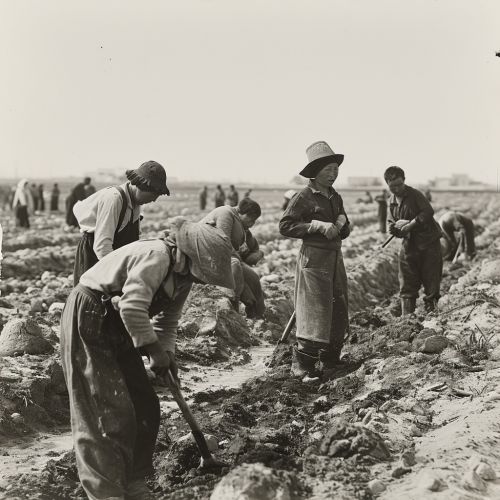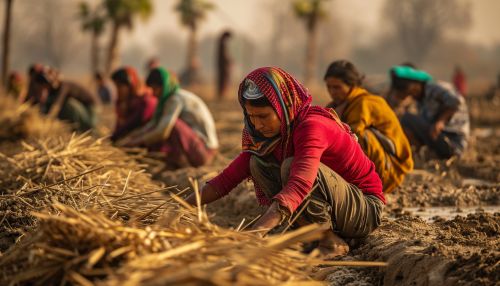Forced labor
Definition and Overview
Forced labor, also known as involuntary servitude, refers to a situation where individuals are coerced to work through the use of violence or intimidation, or more subtle means such as accumulated debt, retention of identity papers or threats of denunciation to immigration authorities. Forced labor can be understood as work that is performed involuntarily and under the menace of any penalty. It refers to situations in which persons are coerced to work through the use of violence or intimidation, or by more subtle means such as manipulated debt, retention of identity papers or threats of denunciation to immigration authorities Convention Concerning Forced or Compulsory Labour.
Historical Context
Forced labor has been a component of human societies for thousands of years, with evidence of its existence in ancient civilizations such as Egypt, Greece, and Rome. In more recent history, forced labor was a fundamental aspect of the transatlantic slave trade and colonial rule in many parts of the world. It was also used extensively in totalitarian regimes during the 20th century, including Nazi Germany and the Soviet Union.
Forms of Forced Labor
Forced labor takes many forms, including debt bondage, trafficking and other forms of modern slavery. The victims are the most vulnerable – women and girls forced into prostitution, migrants trapped in debt bondage, and sweatshop or farm workers kept there by clearly illegal tactics and paid little or nothing.
Debt Bondage
Debt bondage or bonded labor occurs when a person is forced to work in order to pay off a debt. They are tricked into working for little or no pay, with no control over their debt. Most or all of the money they earn goes to pay off their loan. The value of their work becomes invariably greater than the original sum of money borrowed.
Human Trafficking
Human trafficking involves the recruitment, transportation, transfer, harboring, or receipt of persons by means of threat, use of force or other forms of coercion for the purpose of exploitation. Exploitation includes forcing individuals into prostitution or other forms of sexual exploitation, forced labor or services, slavery or practices similar to slavery, servitude or the removal of organs Protocol to Prevent, Suppress and Punish Trafficking in Persons, Especially Women and Children.
Child Labor
Child labor is a form of work that is likely to be hazardous to the health and/or physical, mental, spiritual, moral or social development of children. The International Labour Organization estimates that 152 million children worldwide are engaged in child labor, and half of them are involved in hazardous work.
Causes and Contributing Factors
Forced labor is often associated with a range of social and economic factors that create vulnerability to coercion, such as poverty, lack of education, gender, age, and migration status. Other factors can include political instability, conflict, and cultural practices.
Legal and International Framework
Forced labor is universally condemned and is illegal in virtually all countries. It is also prohibited in international law, with numerous international instruments prohibiting forced labor, including the Forced Labour Convention of the International Labour Organization, the Universal Declaration of Human Rights, and the United Nations Convention against Transnational Organized Crime.
Impact and Consequences
Forced labor has devastating impacts on individuals and communities. It can lead to physical and psychological harm, social stigmatization, and economic disadvantage. At a broader level, forced labor can contribute to social inequality and economic distortion, and can undermine social cohesion and development.
Efforts to Combat Forced Labor
Efforts to combat forced labor include legal measures, awareness raising, social and economic development, and victim support. These efforts involve a wide range of actors, including governments, international organizations, non-governmental organizations, trade unions, and businesses.


